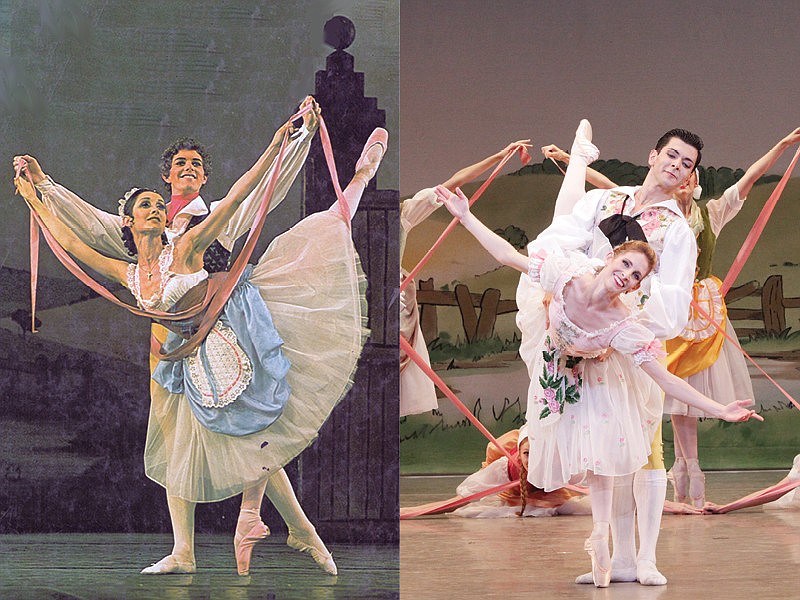- April 23, 2024
-
-
Loading

Loading


Iain Webb sits in a quiet daze. For his wife, his pensive eyes and face are a telltale sign the artistic director of the Sarasota Ballet is dreaming something up.
“Iain, what’s on your mind?” she asks him.
He waves her off.
“No, no, no, it’s nothing,” he says.
Then, a few weeks later, that nothing has suddenly materialized into something — a big something.
“Well, what about doing a Sir Frederick Ashton Festival?”
Webb’s wife, Margaret Barbieri, who also doubles as assistant director of Sarasota Ballet, doesn’t recall the exact moment the idea was born, but the scene she has just described is typically what happens when Webb’s gears start turning. And, April 30, that idea will transpire into a four-day festival featuring 11 works of the founding choreographer of the British Royal Ballet.
Barbieri sits in her office in the FSU Center for the Performing Arts. In a few days, she’ll leave for London where she’ll join Webb Sept. 22, to speak on a panel at an Ashton symposium at The Royal Ballet School. Speaking alongside them are notable dance critics, historians, former dancers and choreographers who have worked with Ashton or stage his ballets.
She explains that the timing of the panel is terrible: The dancers already staged two Balanchine ballets; they are working on “John Ringling’s Circus Nutcracker”; and Paul Sutherland is here staging Agnes de Mille’s “Rodeo.” But, they made it work because it will be good for the company, and she also hopes it will promote the festival.
Although Sarasota Ballet performs pieces by modern and classical choreographers and its season includes a variety of great work, Sarasota Ballet is creating an international stir with its Ashton repertoire — it has put the company on the map.
Barbieri spent her first career as a dancer in Sadler’s Wells Royal Ballet, while Webb danced with the Royal and Sadler’s Wells Royal Ballet, both under Ashton’s tutelage. In fact, the couple was so close with the choreographer that Ashton was the first to know Barbieri was pregnant — even before their parents.
It’s a favorite story the couple often shares. Barbieri had been told she couldn’t have children, but suddenly found out she was pregnant. For fear it was an ectopic pregnancy, she and Webb kept quiet. She went to the doctor and learned it was a normal pregnancy. Webb was rehearsing with Ashton, so Barbieri rushed to the studio, peered in the window and gave Webb an excited thumbs-up. Webb was giddy, and Ashton knew something was going on. He took the couple to lunch to find out the good news.
Following lunch, back in the studio, Ashton kept cracking jokes with Webb, calling him “Pop.” He leaned in toward Webb, cigarette in-hand, and said: “Wearing pink tights and going to be a father? I think not, Pop.”
Barbieri first worked with Ashton in 1965 upon her graduation from the Royal Ballet School, right at the start of her career, and continued to work with him until his death in 1988. She can’t count how many of Ashton’s more than 100 ballets he choreographed that she danced in her career. “Twenty-five years’ worth,” she laughs.
Now, the couple’s second careers have been spent staging Ashton ballets. Barbieri has personally staged eight, mostly pieces she had danced in previously. In “La fille mal gardée,” she danced all but the chicken part. And she danced every role in “The Two Pigeons.”
So, when staging a ballet, she relies on both body and music memory from these performances. However, relying on memory alone would be fatal, she says. There’s a lot of research that goes into it.
When she staged “La fille mal gardee” last season, what she calls a “mammoth operation,” she studied six DVDs of original performances. Of course, there are slight differences in the way companies performed them.
“Fred liked that, in a way, because when he would work with you, he would change things to suit you,” Barbieri says.
For instance, she remembers when she was learning the choreography for “The Dream.” At one portion of the choreography, she tried to match ballerina Antoinette Sibley’s arm movement, but Ashton said, “Come on, Maggie! Do so much more!”
When she stages his works, she feels connected to Ashton — and his legacy. Not only did he create the foundation of the British style of ballet, but every ballet conjures memories. She remembers him wielding a cigarette; as a quiet and timid choreographer, yet knowing exactly what he wanted; and for his great sense of humor. She and Webb are sure to share these moments with the dancers.
“These are ballets we absolutely adore, and to pass these on to younger generations is a great privilege,” she says. “It’s wonderful to see them come alive.”
Barbieri is quiet about what we can expect for the following seasons, although she does say that Webb was making negotiations with the Brit big-wigs when he was in London.
“I get worried that we can’t (top ourselves),” Barbieri says.
But, she’s seen that look on Webb’s face before.
“He never stops dreaming, which is great, because that’s what you have to do,” she says, “and his dreams materialize.”